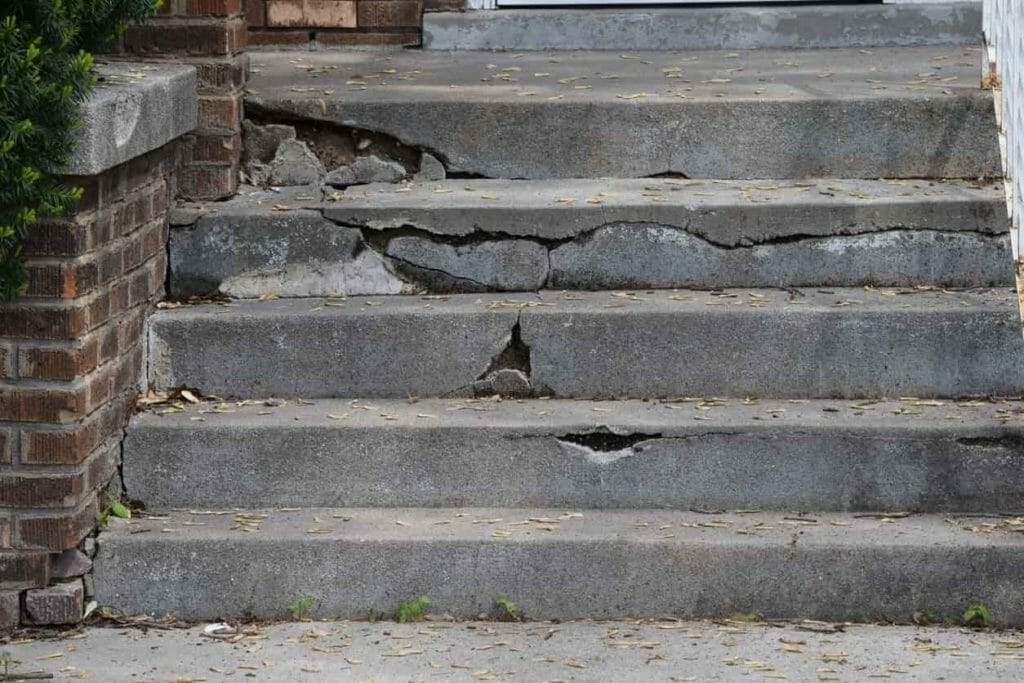Yes. You can file a claim against the responsible party to seek compensation for the damages resulting from the accident. Several parties may be held accountable, including the property owner, business, contractor, property management, or condominium association.
The Prevalence of Injuries Resulting from Falling Down the Stairs
If you recently suffered a staircase slip and fall accident, you’re not alone. Millions of people go through the same experience every year. The following eye-opening statistics from the CDC describe how severe and costly:
- About one out of our older adults (beyond 65 years) falls annually, but less than 50% of these inform their doctor.
- About 210% of all staircase accidents cause severe harm like head injuries or broken bones.
- Over three million older adults undergo emergency room treatment for fall injuries, and more than 800,000 patients are hospitalized for the same every year.
Notably, slips and falls are the second leading cause of unintentional fatalities globally. About 684,000 victims globally lose their lives due to falls.
What Kind of Injuries Can You Suffer from Falling Down the Stairs?
Call us today at (305) 694-2676 or
contact us online for a free case evaluation.
Hablamos español.


There’s an endless list of injuries that one can sustain when they fall down the stairs. Lower body injuries are the most common, then neck and head hurt. A study whose findings were published in the American Journal of Emergency Medicine found that strains and sprains comprise about a third of fall injuries caused by stairs.
The most common minor injuries that victims suffer include:
- Strains – A discomfort in your back, leg, neck, or arm muscles caused by tearing or stretching.
- Sprains – Injuries caused by tearing or stretching of ligaments in your ankle or knee joints
- Bruises – The back area often takes the brunt of the fall, and this could cause bruises in this area
- Minor scrapes and cuts – These injuries result from contact with railing or stair treads when falling
Survivors may also experience severe injuries like:
- Fractures – Stair falls usually cause broken bones like the shoulders, ankles, foot, hip, or scapula.
- Deep lacerations – These are severe cuts that may require specialized treatment or stitches.
- Herniated disk – This condition results when the rubbery disc’s soft center between the back or neck bones pushes through a cracked exterior casing
- Internal bleeding – The impact of a fall could cause blood vessels within your body to crush or tear.
- Head injuries – A severe fall on the staircase could cause a skull fracture, concussion, or other traumatic head injuries.
The victim’s age can significantly determine the resultant injury. For instance, minors below ten years are prone to neck or head injuries. Older adults, on the other hand, predominantly suffer bone fractures.
When Can I Sue for Injuries That I Suffered After Falling Down Stairs?
National Security Council (NSC) guidelines recommend regular inspections of stairways to prevent unnecessary injuries. If it’s a public area like a retail store or restaurant, the property owner will be responsible. At work, it’s the employer’s duty to ensure the space is risk-free. The council also recommends adequate lighting, handrails, stair treads, and other preemptive safety measures.
To have a valid injury claim, the responsible entity or owns the staircase must have been negligent. This means that the stairs were unreasonably dangerous, and this caused you to fall.
The most common risk factors include:
- Improper or inadequate lighting
- Damaged steps
- Defective stairs
- Inconsistent risers or treads
- Broken or missing handrails
- Unreasonably slippery surfaces

Legal Responsibility for Staircase Accident Injuries
For one to be legally responsible for the injuries resulting from tripping or slipping and falling, you must prove the following:
- The premises owner or other responsible party caused risk factors such as torn or worn spots, spills, or other conditions;
- The premises owner or other responsible party was aware of the stairs’ dangerous state but failed to act on it; and,
- The premises owner or other responsible party knew or should have been aware of the danger because a “reasonable” individual tasked with caring for the property would have seen and repaired or removed the threat.
Florida’s Comparative Negligence Rule
Get started with your complimentary case evaluation today;
call us at (305) 694-2676 or reach us online using our
secure contact form.


The comparative negligence rule applies to all personal injury claims in Florida. In some cases, the party you’re filing a personal injury claim against may turn around and claim that you’re to blame (at least partially) for the accident that led to your injuries. They may also blame you for aggravating the injuries and property damage. Furthermore, the insurance adjuster may approach you and try to talk you into admitting part of the fault.
All these are meant to take advantage of the state’s comparative fault rule that reduces damages you’re entitled to by the amount proportional to your percentage of fault.
So if you fell down the slippery stairs yet you failed to heed any warnings or practice reasonable care, you might share a percentage of the blame for the incident. For instance, if the court awards $20,000.00 in damages yet finds you 10% responsible for your injuries, you’ll end up with 90%, which is $18,000.
Florida courts are obliged to apply this rule in personal injury cases. If you’re seeking a remedy outside the court system, the insurance adjuster may try to include the comparative negligence rule in the negotiations.
An Experienced Attorney Is Ready to Help
If you require reliable legal representation for your staircase accident claim, then look no further. The professional and experienced attorneys at Prosper Injury Attorneys are ready to evaluate your case and fight for you.
